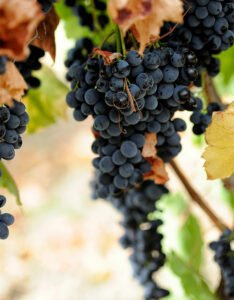
OK, I know this isn’t fair, but today we’re starting with a pop quiz. The subject: Wine Myth or Fact? Each of the six statements below falls into the "they say that . . ." category. But, some of the statements are true and some are false. Can you separate myth from fact? The answers appear below, after we introduce our wine of the week.
Myth or Fact?
- Sulfites in wine cause headaches.
- Older wines are better than younger wines.
- Wines produced in cold climates generally have lower alcohol than those produced in warmer climates.
- Screw tops are only used on lower quality wines.
- Wine color indicates how intense a wine will be.
- White Champagne can be made from red grapes.
While you’re pondering that, let’s talk about our wine of the week. It's a 2016 Feudo Principi di Butera Nero d’Avola ($19), from the southeastern part of Sicily. Nero d’Avola is the leading red grape in Sicily. It typically produces wines that are fruity, full-bodied and spicy; they are sometimes confused with Syrah. The great thing about a Nero d'Avola is that you can get a pretty good wine for a decent price. Note, however, that a Nero d'Avola's style can vary among producers and Sicily regions. Some have tastes and aromas of black fruit, spices, coffee and chocolate. Others are leaner, with notes of cherry, fruit and herbs.
Now, let's talk specifically about the Feudo Principi. It's made in Butera, in south central Sicily, from 100 percent Nero d'Avola grapes (some Nero d'Avolas are blends). The wine spends a year in oak before additional aging in the bottle. It has subdued aromas of black cherry and spice. On the palate, it's full-bodied, has firm but pleasant tannins, black cherry, spice, cedar and perhaps a hint of vanilla. The finish is medium. Overall, this is a very good wine, and a good value. It pairs well with red meats - anything from a hamburger to a grilled steak. It's also great with lamb and even grilled tuna.
Now, the answers to the quiz:
1.Sulfites in wine cause headaches.
Myth. Contrary to popular belief, there is no scientific evidence that sulfites cause headaches. So, why the scary "contains sulfites" warning on wine labels? A small percentage of the population, mainly asthmatics, is sensitive to sulfites. This first became an issue in the 1980s when sulfites used as preservatives on salad bars caused adverse reactions, and the FDA imposed regulations. All wine contains some level of sulfites, which are a natural byproduct of fermentation. Additionally, winemakers typically add small amounts of sulfites to prevent oxidation and spoilage. But sulfites aren't unique to wines - they are often used as a preservative in other food products, such as beer, fruit juice, shrimp and salad dressings. The bottom line: if you have a headache after drinking wine, this is more likely the result of too much alcohol or even dehydration
2. Older wines are better than younger wines.
Mostly a myth. The vast majority of wine, particularly rosés and inexpensive whites, are best consumed within a couple of years of their vintage. After that, their quality declines, sometimes rapidly. So, if you're planning on buying a case of your favorite Pinot Grigio for consumption several years from now - don't. In contrast, some wines, like a fine Bordeaux, California Cabernet Sauvignon or Barolo, will improve with age. What makes a wine suitable for aging is a somewhat complicated question, but (assuming it is well made) critical factors are the levels of tannin, sugar and acid in the wine. Each of these substances is a preservative that allows the wine to age.
3. Wines produced in cold climates generally have lower alcohol than those produced in warmer climates.
Fact. Grapes grown in colder climates struggle to ripen, and therefore have lower sugar levels. During fermentation, sugar is converted to alcohol. So, the less sugar in the grapes the lower the alcohol will be.
4. Screw tops are only used on lower quality wines.
Myth. Consumers often mistakenly associate screwtops with cheap wine, but a screwtop is not an indication of inferior quality. In fact, the screw top has several advantages over the conventional cork stopper: it provides the best oxygen seal, it is not affected by "cork taint," and there's no need for a special tool to open the bottle (consider that the next time that you have a bottle and there's no corkscrew handy). There is an increasing trend towards the use of screwtops in good quality wines, particularly in Australia and New Zealand. Another example is the Baumard Quarts de Chaumes Grand Cru, from France's Loire Valley, which now uses a screwtop.
5. Wine color indicates how intense a wine will be.
Myth. Although it seems logical enough, the color of a wine doesn't necessarily tell you how intense the flavor of a wine will be. For example, Burgundy Pinot Noirs can have relatively pale colors and yet very intense flavors. Similarly, the light color of a Barolo does not correspond to the intensity of the wine.
6. White Champagne can be made from red grapes.
Fact. Many Champagnes use the red Pinot Noir and Pinot Meunier grapes in their blend. A Champagne labeled blanc de noirs is made from red grapes.
Next week, back to Burgundy for a Côte de Beaune blanc.
